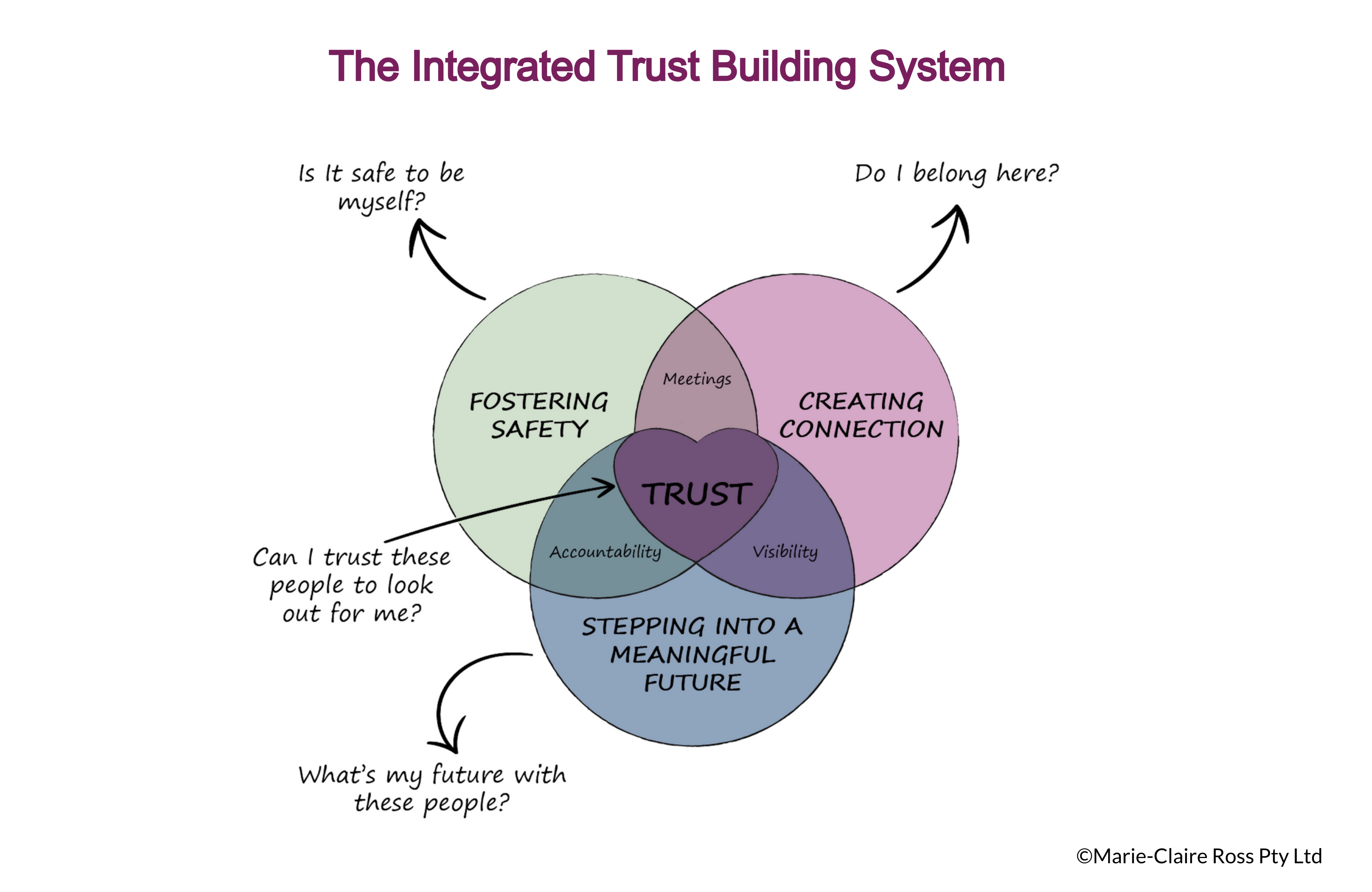We are biologically wired to want to be with other people. It is a deep human need to feel like we belong and fundamental to human motivation.
In the workplace, we feel happy when we have a sense of connection to others and interact happily together.
Research discussed in the book, First, Break all the Rules by Marcus Buckingham, found that when staff have a good relationship with their manager or supervisor they are more engaged at work and stay longer at their job. After all, we are more likely to follow someone who we know will do the right thing by us. As a result of giving and receiving support, both the leaders and team member’s reward networks in the brain light up. Activating the reward centre in the brain encourages people to create and contribute, rather than shut down and hide in self-protection mode.
At the heart of it, employees want to know that their boss cares about them. They want to know that they are more than just a tool of productivity.
According to research by Christina Boedker, from the Australian School of Business, out of all of the various measurements her research team looked at in an organisation, it was, the ability of the leader to be compassionate – that is, "to understand people's motivators, hopes and difficulties and to create the right support mechanism to allow people to be as good as they can be" – that had the greatest correlation with profitability and productivity.
The best leaders bring out the best in people. And they work on strengthening the bonds between themselves and their direct reports and to each other.
8 Tips for Connective Leadership
Here are eight tips to strengthen connection in your team:
- Encourage transparency - In the book, Tribal Leadership, people that don't like to share information believe that knowledge is power, so they hoard it. However, the real power is in the sharing. For hybrid teams, it can be easy to forget to share making people feel left out. Make it a general rule to be as transparent as possible, in order to provide the right context for people. Share meeting notes, send regular updates and ensure all tasks and expectations are clearly documented. Consider adding a “through the grapevine” agenda item to meetings as a fun, informal way for people to share company information they’ve heard so you can either confirm or debunk.
- Like and respect everyone - Being able to accept people for who they are (and not judge) is a sign of a good leader. This requires assuming positive intent. It also means that when you need to have a performance discussion people are less likely to take it personally (and therefore, actively resist your message).
- Be genuinely interested in others -One of the most important steps in building trust and connection in your team is to spend time understanding each individual. We don’t trust people who are only interested in themselves. Ask incisive questions to uncover communication, work styles and receiving feedback preferences. This will help you customise your communication to each person in your team.
- Help Team Members Understand each Other – Hybrid teams are less likely to recover from team members who are not trusting or trustworthy. Ensure each team member talks about their progress to help everyone understand each person’s contribution. Make each individual responsible for gathering this information and presenting it. This is important because we only trust people who are competent at their job. Encouraging each member to prove their competency will help others trust them. Also, creating opportunities for people to learn about each other outside of work is important. Make sure that you schedule social time before or after a meeting to allow people to talk about their personal lives.
- Equality in conversational turn-taking – One of the interesting things that Google discovered makes for a high performance team is that the leader ensures everyone gets a chance to talk and speak up. It doesn’t have to be every day, or even every week, but over a couple of months, everyone gets roughly the same air time in meetings. If only one person or a small group spoke out frequently, the collective intelligence of the team decreased.
- High social sensitivity – Another finding from Google, was that high performance teams were good at picking up on how others were feeling based on their non-verbal cues such as tone of voice or facial expression. Poor performing teams were less sensitive to each other. Model the right behaviours by asking how people are going, if they look sullen or withdrawn in meetings, their voice changes pitch or they are unusually fidgety. Over time, team members will also check in with their peers.
- Put the team first - Great leaders aren't about "I" or "me". They're about "we" every step of the way. All of their decisions are based on what is good for the company . All company projects and activities are fuelled by the company values with the company vision used as a tool to align everyone to the same goal.
- Provide praise and feedback -When it comes to enhancing performance and motivating staff - the best reward is positive feedback. We all like to hear we are doing a good job. And the more specific, the better. Rather than saying "Wow. You did a great job leading the meeting today," provide meaningful and specific information about how their leadership met the objectives such as "You did a great job of explaining the current issues and helping people work out the next steps to take."
If you want to get more tips on how to build safety, connection and align everyone to a meaningful future, learn about my FAST TRUST Leadership Program.
 .
.


